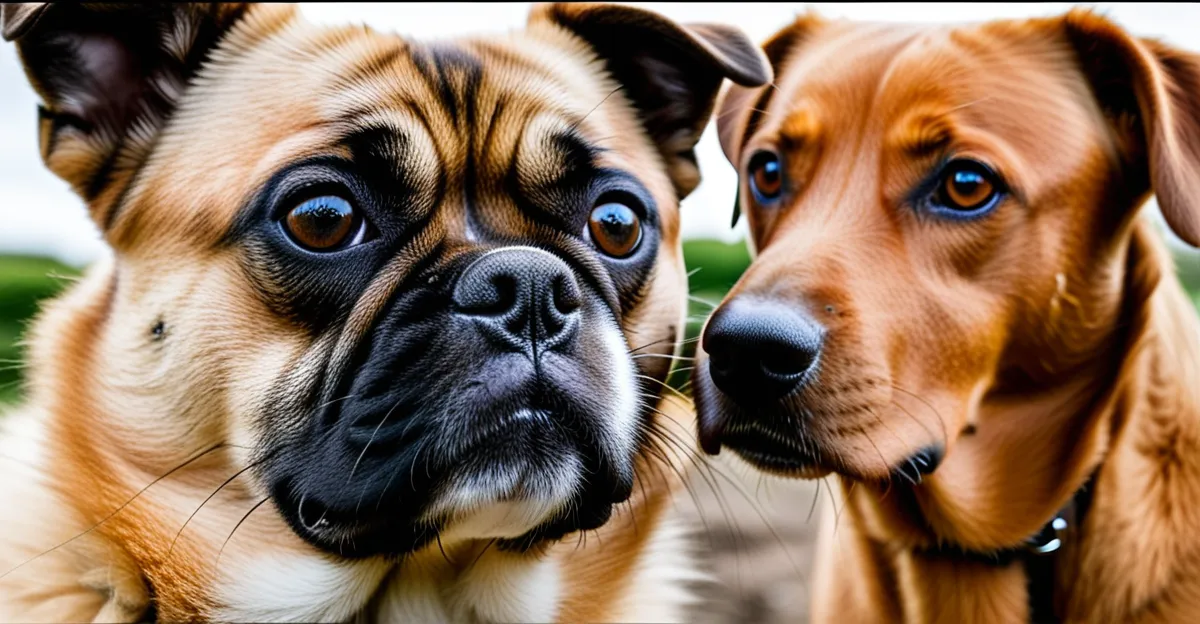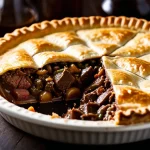Historical Pet Ownership Trends in the UK
Understanding the historical pet ownership trends in the UK provides valuable insights into shifting societal values and demographics over time. For several decades, pets have been a staple in UK households, with varying patterns that reflect changes in lifestyle and cultural attitudes. Historical UK pet statistics demonstrate fluctuations in popularity among different pets, often aligning with societal priorities and economic conditions.
Throughout the years, key societal values have been mirrored in the way UK citizens choose, care for, and regard their pets. For example, in eras marked by economic prosperity, there was an increase in pet ownership as people had more disposable income to spend on animals and related care. Conversely, during economic downturns, ownership numbers dipped, aligning with reduced consumer spending.
Additional reading : How Can You Enhance the Bond Between Your Family and Their Furry Friends?
Demographic changes have also played a pivotal role in influencing pet ownership patterns. As urbanization increased, a distinct shift was observed towards smaller pets, such as cats and small dogs, suitable for compact living spaces. Additionally, changing family structures and living arrangements, such as more single-person households, have diversified the types of pets people choose to adopt, highlighting the evolving function of pets as companions that offer emotional support.
In summary, analyzing historical pet ownership trends in the UK showcases the intersection of economic and cultural factors shaped by ongoing demographic shifts. These trends offer a lens through which we can observe how societal values have transitioned over time, reflecting broader economic and cultural narratives.
Additional reading : How Can Pet Owners Navigate Brexit-Related Changes in the UK?
Current Demographics of Pet Owners in the UK
In recent years, the demographic shifts in the UK have significantly impacted pet ownership trends. The population’s age, gender, and socioeconomic factors play a crucial role in determining who is most likely to own pets. Young singles and child-free couples are increasingly embracing pet ownership as a substitute for traditional family structures, making pets a central part of their lives.
A comprehensive look at pet ownership statistics reveals intriguing patterns. For example, younger adults, particularly those aged 25-34, are emerging as prominent pet owners, often opting for smaller, more manageable pets suited to urban living conditions. Conversely, older adults tend to favour dogs and pets that provide companionship in later life stages.
Gender differences are also evident, with women more likely than men to own pets, particularly cats. This trend suggests a nurturing instinct or a desire for emotional connection. Meanwhile, socioeconomic status influences the type and number of pets owned, with higher-income households more inclined towards accommodating multiple pets due to greater financial freedom.
Urban vs rural trends show a clear divide, shaped by the demands of living space and lifestyle. In cities, smaller pets compatible with apartment settings, such as fish and indoor cats, are prevalent. In contrast, rural areas see a preference for larger animals, including dogs and livestock, due to the availability of space and a more outdoor-centric way of life.
The impact of multicultural influences on pet preferences is notable, with ethnic backgrounds contributing to the diversity of pet choices. Varied cultural attitudes towards animals influence the types of pets households choose, reflecting broader multicultural integration within UK society. This diversity enriches the tapestry of pet ownership, making it a vivid reflection of the nation’s social composition.
Economic Influences on Pet Ownership
The realm of pet ownership in the UK is significantly shaped by economic factors, which dictate the ability and inclination of individuals to care for pets. Increased disposable income often leads to a rise in pet ownership, as people perceive financial comfort as a licence to expand their household with pets. In contrast, economic downturns can see a drop in new pet adoption rates, reflecting a more cautious approach to spending.
The pet industry growth in the UK is another testament to the strong relationship between economics and pet care. In recent years, there has been a burgeoning interest in products and services tailored specifically for pets, ranging from gourmet pet foods to luxurious grooming services. This sector’s expansion highlights a shift towards treating pets as integral family members, deserving of premium care.
Consumer spending trends reveal insights into this dynamic relationship, with pet owners increasing their expenditure not only on pet necessities but also on accessories and experiences aimed at enhancing their pets’ quality of life. This spending pattern reinforces the notion that as economic stability improves, consumers are more willing to allocate resources towards pet-related expenses, fostering a thriving marketplace.
Attitudes Towards Animals and Pet Ownership
The attitudes towards pets have undergone significant transformations over the years, with societal shifts influencing how animals are perceived and integrated into family life. Historically, pets were often viewed primarily as possessions or utilitarian animals, serving specific roles such as hunting or guarding property. Over time, there has been a marked change towards recognizing pets as integral family members. This shift reflects broader societal changes, including increased urbanization and changing family structures.
Animal welfare movements have played a critical role in reshaping perceptions and practices related to pet ownership. As awareness about animal rights and welfare has grown, so too has the emphasis on ethical treatment and responsible ownership. These movements have advocated for better living conditions, healthcare, and laws protecting animal rights, fostering a more compassionate approach to pet care.
Moreover, the influence of social media in shaping attitudes towards pets cannot be understated. Platforms like Instagram and TikTok have given rise to pet influencers, which helps humanize animals and highlight their personalities and importance in people’s lives. This media exposure has reinforced the view of pets as beloved family members and increased awareness of their needs and well-being.
In essence, the evolving perceptions of pets underscore a collective shift in value systems, highlighting a growing acknowledgment of the emotional and social contributions that pets make to households and society at large.
Societal Impacts of Pet Ownership
Understanding the mental health benefits of pet ownership reveals significant advantages for individuals’ well-being. Research consistently shows that interactions with pets can lead to reduced stress levels, lower blood pressure, and decreased feelings of loneliness. For many, pets provide a sense of purpose and routine, offering emotional support that helps combat anxiety and depression.
Pets also act as facilitators of social interactions and community building. Whether it’s walking a dog or participating in pet-related social events, pets can serve as a catalyst for human connection. This aspect is particularly notable in urban environments where social isolation can be more prevalent. In such cases, pet ownership can help forge relationships with neighbours and strengthen community bonds.
Additionally, owning pets plays a vital role in enhancing quality of life and well-being. Companionship from pets delivers emotional stability, contributing to happier, more fulfilled lives. Furthermore, the nurturing aspect of caring for a pet can instill a sense of accomplishment and responsibility, enriching daily life. By fulfilling these emotional and social needs, pets become integral to personal happiness and broader societal health.
Cultural Reflections and Trends
Observing cultural attitudes and pet ownership trends in the UK reveals a fascinating intersection of tradition and evolving social norms. These trends highlight how pets often serve as a mirror reflecting deeper societal values and lifestyle preferences. Over recent decades, there has been a noticeable shift in perceptions, with pets becoming an emblem of personal identity and cultural expression.
Throughout the UK, case studies exemplify the differences in pet ownership influenced by distinct cultural backgrounds. In urban areas with diverse multicultural populations, pet choices often vary widely, reflecting traditional beliefs and customs from around the world. For example, some communities might prefer birds due to their cultural significance, while others may lean towards cats for symbolic reasons tied to their ancestry. These differences enrich the landscape of pet ownership, celebrating the multiplicity of cultural narratives within the UK.
The significance of pets extends beyond companionship; they represent lifestyle choices aligned with broader cultural shifts. As society increasingly values sustainability and ethical living, there is a growing trend towards adopting shelter animals, which aligns with a more conscious lifestyle. Moreover, pets are often featured in social media as lifestyle elements, thereby reinforcing their role in depicting social status and personal values. This trend underlines a dynamic cultural adaptation where pet ownership illustrates not only individual preferences but collective societal progression.
Future Trends in Pet Ownership in the UK
Navigating the landscape of emerging trends in pet ownership reveals fascinating predictions about how the sector is set to evolve. The convergence of technology and changing consumer expectations is driving unprecedented shifts in the market, prompting both opportunities and challenges for pet-related products and services.
Anticipating future trends, we expect a rise in advanced pet services catering to a tech-savvy audience. Innovations such as smart pet devices that monitor health and behaviour are likely to gain traction, providing more precision in pet care. These technologies promise improved health outcomes and enjoyment for both pets and their owners.
Future predictions suggest a heightened focus on sustainability within the industry. As environmental consciousness becomes mainstream, there will be a push towards eco-friendly pet products, from biodegradable litter to sustainably sourced pet food. This aligns with broader societal efforts to promote ethical and responsible living environments.
Emerging trends also call for more personalized pet services. The rise of boutique pet businesses focusing on tailored care options is a testament to this evolving demand. Recommendations for businesses include adapting to these knowledgeable consumers by offering customised solutions that cater to specific pet and owner needs, from tailored nutrition plans to personalised training sessions.
Through these innovations and services, the pet industry will continue to mirror societal shifts, adopting practices that reflect emerging trends in cultural values and technological advancements.








